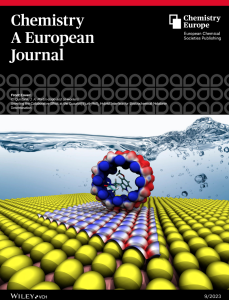Host-guest interactions are of paramount importance in supramolecular chemistry and in a wide range of applications. Particularly well known is the ability of cucurbit[n]urils (CB[n]) to selectively host small molecules. We show that the charge transfer and complexation capabilities of CB[n] are retained on the surface of 2D transition metal dichalcogenides (TMDs), allowing the development of efficient electrochemical sensing platforms. We unveil the mechanisms of host-guest recognition between the MoS2-CB[8] hybrid interface and melatonin (MLT), an important molecular regulator of vital constants in vertebrates. We find that CB[8] on MoS2 organizes the receptor portals perpendicularly to the surface, facilitating MLT complexation. This advantageous adsorption geometry is specific to TMDs and favours MLT electro-oxidation, as opposed to other 2D platforms like graphene, where one receptor portal is closed. This study rationalises the cooperative interaction in 2D hybrid systems to improve the efficiency and selectivity of electrochemical sensing platforms.

Full text in this link
Unveiling the Collaborative Effect at the Cucurbit[8]uril-MoS2 Hybrid Interface for Electrochemical Melatonin Determination, Martínez-Moro, R., del Pozo, M., Mendieta-Moreno, J. I., Collado, A., Canola, S., Vázquez, L., Petit-Domínguez, M. D., Casero, E., Quintana, C., Martín-Gago, J. A., Chem. Eur. J. 2023, 29, e202300147.

